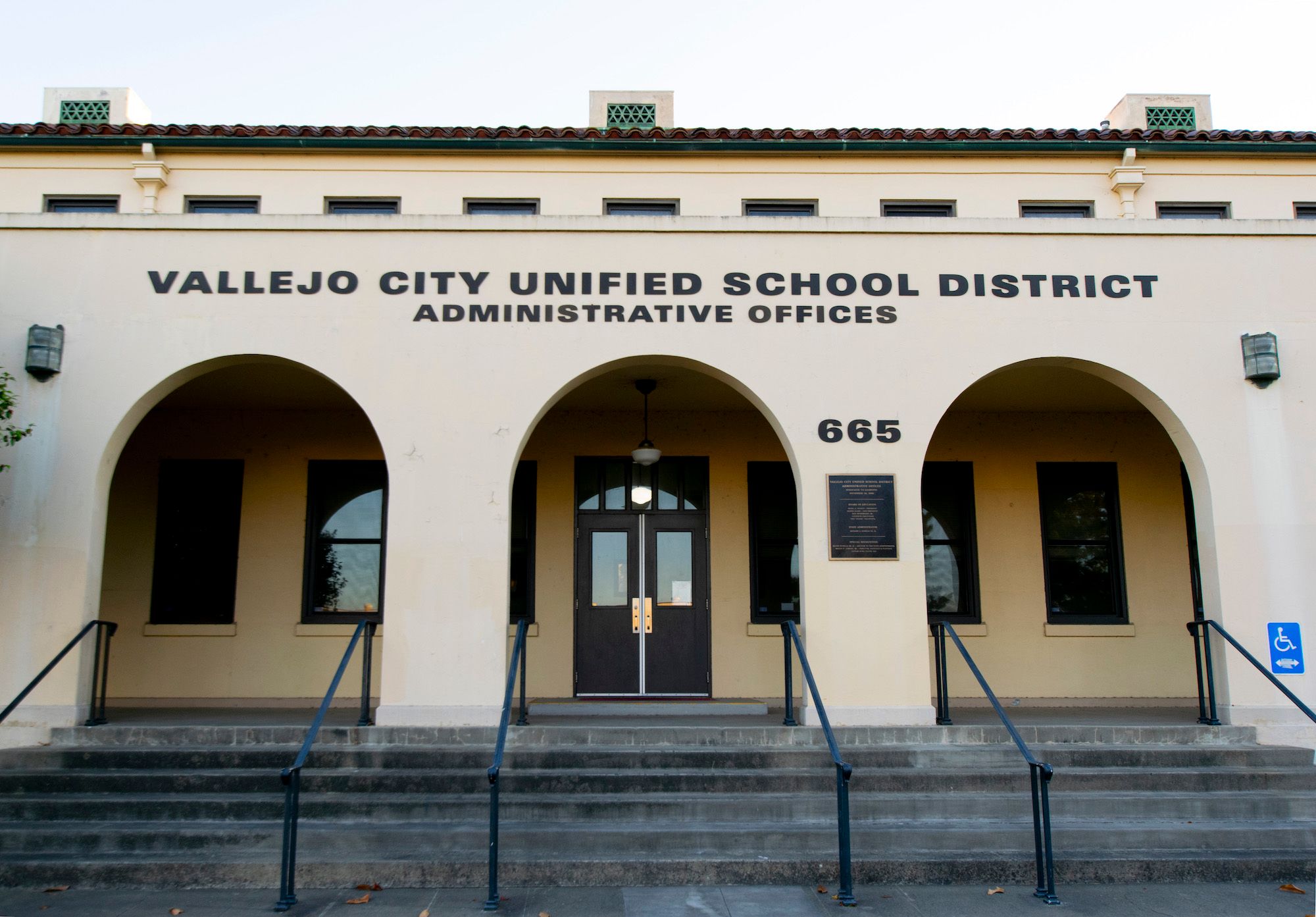VALLEJO – The Vallejo City Unified School District is planning to cut $5 million, including $4.1 million in staff and educator positions, from the coming year’s budget in an attempt to alleviate this years’ budget deficit of $13 million and a projected $7 million shortfall for the 2024-25 school year.
The budget deficits are primarily tied to the district's declining enrollment. Districts across the state have seen student enrollment drop and Vallejo has lost additional students to the city’s charter schools in recent years.
The district’s enrollment has declined by an average of 638 students per year from the 2019-20 school year to the 2022-23 school year, according to district Chief Business Official Rosa Ma Loza.
At the same time the district is facing rising costs as they take steps to retain qualified personnel. Superintendent William Spalding said that the difficult labor market that arose during the COVID-19 pandemic has put pressure on the district to increase salaries in order to remain competitive with local and regional schools.
In January the school board approved agreements with unions for an 11% pay raise for administrators, an 8% pay raise for all educational support staff and a 7% pay raise for educators, with additional increases tied to length of their employment with the district.
The district-wide salary increases were expected to require significant cuts in the upcoming budget, but district officials said they were able to make the cuts by eliminating the positions of employees who already plan to retire.
"These [cuts] do not call for us to lay anyone off, they are not impacting staff, they are positions that can be swept due to attrition," said Assistant to the Superintendent Gigi Patrick .
During the school board’s Feb. 15 meeting, California School Employees Association Chapter 199 second vice president Nikki Arenal expressed concerns about workers who may be vulnerable to additional rounds of cuts.
"Though we recognize, and are relieved, that these proposed reductions do not have an immediate impact on our existing unit members employee status, we are left wondering what this can mean for our site safety supervisors and paraeducators in the future, and most importantly how it can affect our students who rely on them for support and safety in our schools," Arenal said.
Vallejo schools receive state and federal funding based on the number of students enrolled in the district. Student daily attendance is also factored into the funding formula. The district has struggled with chronic absenteeism over the years, but student attendance in Vallejo and statewide dropped off steeply during the COVID-19 pandemic.
Improving attendance is one of the main ways that the district can increase revenue to help ease the budget reductions.
Spalding suggested that there has been a cultural change since the pandemic where students are expected to stay home with a sniffle because it could be something more serious. Additionally, he said, there have been major lifestyle changes in terms of work-life balance and more parents choosing to work from home, which has led parents to feel more comfortable taking kids out of school for family vacations.
Many districts are looking to the state legislature to adjust the state funding model to accommodate these broad cultural changes. “This is not your Mom and Dad’s attendance anymore,” Spalding said.
During the Feb. 15 meeting, members of the district’s attendance task force presented research and strategies to improve student attendance.
According to the lead attendance task force facilitator Edison Kelly, the demographic groups that experience the highest rates of chronic absenteeism – defined as missing 18 or more days in a school year – are Black students, Hispanic students, Pacific Islanders and students of two or more races. Kelly noted that these groups also experience the highest rates of suspensions, which are counted as chronic absenteeism.
High percentages of chronic absenteeism were also found among foster youth, homeless students, socioeconomically disadvantaged students and English learners.
Absenteeism was also found to be higher in grades K-6 than in the middle and high school grades.
The district’s strategies to improve attendance included advertising on billboards and websites, poster contests, and community presentations to raise awareness about the importance of student attendance. The district also designed incentive programs for friendly competition between schools, rewarded students with attendance tokens that they could redeem for prizes and supplies, made calls home to parents when students missed class and conducted meetings with students and parents to address absences.
After listening to the presentation, board Vice President Latyna Young said that she was impressed by the work that the task force had done to collect and present information. But, she said, “When I look at these strategies, those are repeats of things that we have been doing for 10 or 20 years.”
Academic support provider Cherita Dilly said that connections between students and educators continue to be key to improving absenteeism. “It’s sad to say that anxiety and depression is on the rise at our schools,” Dilly said. “Every student needs at least one meaningful relationship with an adult on campus.”
According to Kelly, punitive measures such as truancy court or other social services enforcement options are still available to the district but studies have shown that these options are less effective.
Instead, research points to restorative measures being more effective such as visiting parents, checking in with students on a regular basis, offering independent study if students are sick or need to miss class for a family trip, and tracking students who do miss school to make sure they have the support they need to catch up without getting discouraged.
Before you go...
It’s expensive to produce the kind of high-quality journalism we do at the Vallejo Sun. And we rely on reader support so we can keep publishing.
If you enjoy our regular beat reporting, in-depth investigations, and deep-dive podcast episodes, chip in so we can keep doing this work and bringing you the journalism you rely on.
Click here to become a sustaining member of our newsroom.
THE VALLEJO SUN NEWSLETTER
Investigative reporting, regular updates, events and more
- education
- Vallejo
- Vallejo City Unified School District
- Rosa Ma Loza
- William Spalding
- Gigi Patrick
- Nikki Arenal
- California School Employees Association
- Edison Kelly
- Latyna Young
- Cherita Dilly

Ryan Geller
Ryan Geller writes about transitions in food, health, housing, environment, and agriculture. He covers City Hall for the Vallejo Sun.
follow me :




